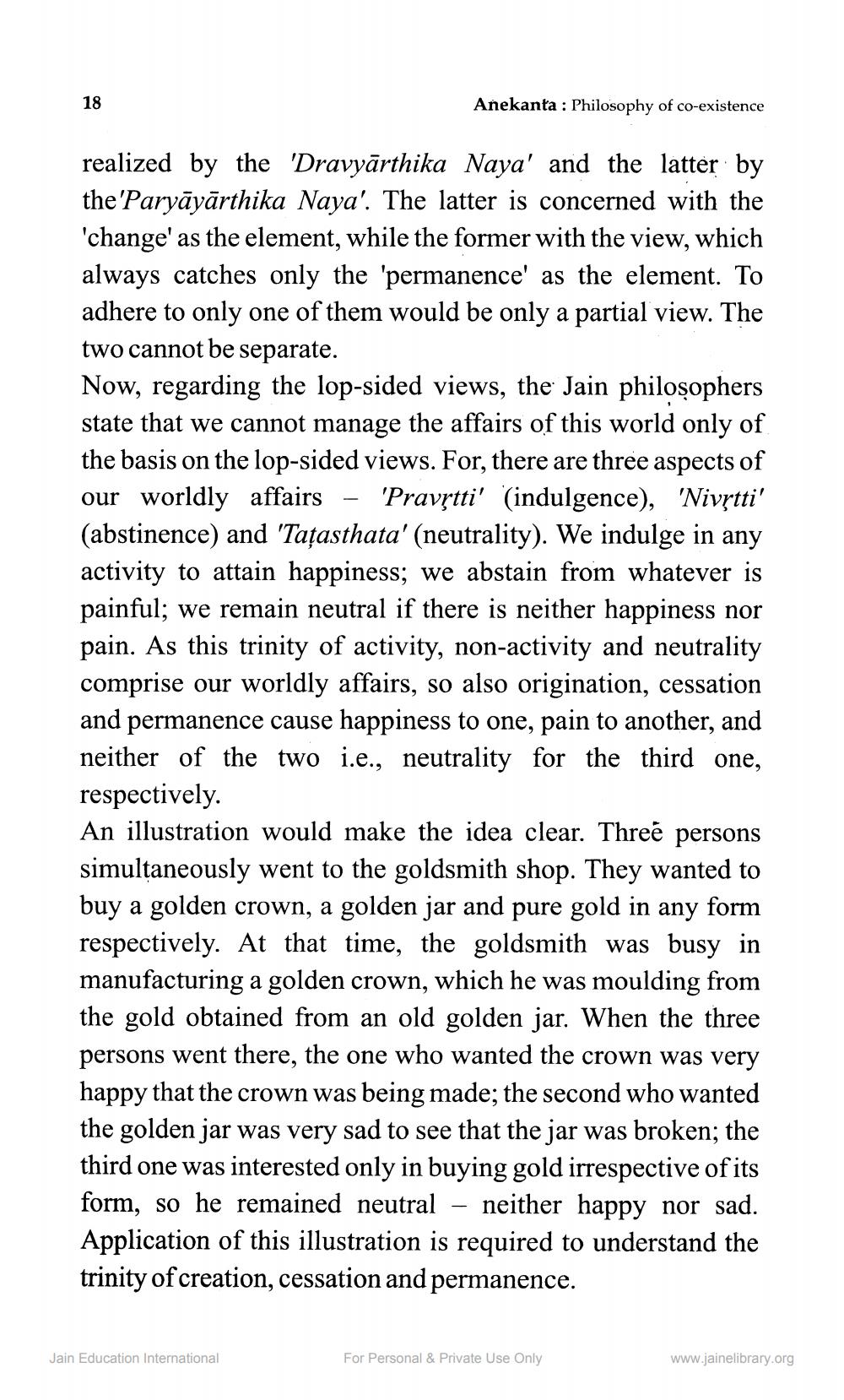________________
18
Anekanta : Philosophy of co-existence
realized by the 'Dravyārthika Naya' and the latter by the 'Paryāyārthika Naya'. The latter is concerned with the 'change' as the element, while the former with the view, which always catches only the 'permanence' as the element. To adhere to only one of them would be only a partial view. The two cannot be separate. Now, regarding the lop-sided views, the Jain philosophers state that we cannot manage the affairs of this world only of the basis on the lop-sided views. For, there are three aspects of our worldly affairs - 'Pravýtti' (indulgence), 'Nivytti' (abstinence) and 'Tațasthata' (neutrality). We indulge in any activity to attain happiness; we abstain from whatever is painful; we remain neutral if there is neither happiness nor pain. As this trinity of activity, non-activity and neutrality comprise our worldly affairs, so also origination, cessation and permanence cause happiness to one, pain to another, and neither of the two i.e., neutrality for the third one, respectively. An illustration would make the idea clear. Three persons simultaneously went to the goldsmith shop. They wanted to buy a golden crown, a golden jar and pure gold in any form respectively. At that time, the goldsmith was busy in manufacturing a golden crown, which he was moulding from the gold obtained from an old golden jar. When the three persons went there, the one who wanted the crown was very happy that the crown was being made; the second who wanted the golden jar was very sad to see that the jar was broken; the third one was interested only in buying gold irrespective of its form, so he remained neutral – neither happy nor sad. Application of this illustration is required to understand the trinity of creation, cessation and permanence.
Jain Education International
For Personal & Private Use Only
www.jainelibrary.org




